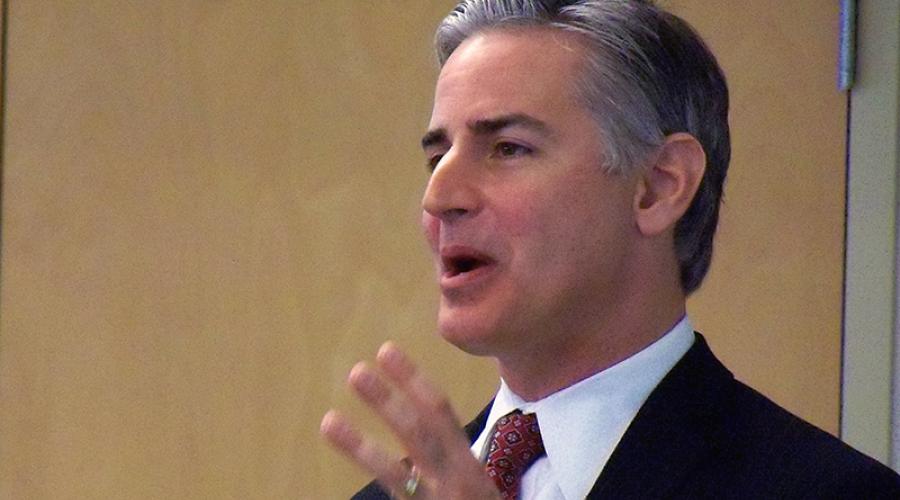
Harry Johnson NLRB Board Member Speaks
ILR’s Labor and Employment Law Program hosted a symposium on Feb. 27 featuring Harry I. Johnson III, a National Labor Relations Board member appointed from a management law firm by President Barack Obama.
The program, entitled, A Conversation with Harry Johnson III: NLRB Update, was held at ILR’s New York City conference center.
Marshall Babson, counsel, Seyfarth Shaw, LLP, and former NLRB member; Karen P. Fernbach, regional director, Region 2, NLRB; and Gabrielle Semel, former district counsel, District One, Communications Workers of America, joined Johnson. The panel discussed controversial NLRB decisions impacting the workplace and provided a window into the board’s thinking.
Esta Bigler, director of ILR’s Labor and Employment Law Program, introduced the conversation, explaining that the NLRB is 80 years old. “Our economy, our workforce, our jobs are significantly different from what Congress faced in 1935,” she said. “No one could have predicted the Internet, email, Facebook, globalization, the service economy, etc.”
“As we discuss these cases, keep two questions in mind: Is this 80-year-old law that created the NLRB up to the challenge of this economy and this workforce; and is our board up to the challenge of this economy and this workforce?”
Johnson’s remarks focused on his dissent on NLRB rulings known as Purple Communications, Babcock & Wilcox, Jimmy John’s and Pacific Lutheran University, and how the board is working to ensure relevance within the new workplace.
Purple Communications is Johnson’s self-declared favorite case to debate, litigation that covers a subject relevant for a majority of the American workforce—the use of email at work.
In Purple Communications, the NLRB reversed its own ruling and long-standing precedent (Register Guard – 2007) and held that employees have a presumptive right to use their employer’s email systems to communicate about workplace issues, including union organizing. The majority of NLRB members viewed email as the modern equivalent of the water cooler, a place where employees congregate and discuss workplace issues.
“The ultimate question is, are there adequate avenues for workers to have effective Section 7 communication?” said Johnson referring to the principal section where the law sets forth the rights of employees. “Here is my problem, over the next several points, where I believe the Board really went off the rails,” referring to the Purple Communications case.
“One, is that a water cooler?” said Johnson, referring to a detailed diagram of an intricate email network, eluding to it not being the same as employees discussing issues during their break on employer premises. “An email network is totally different from a water cooler put in a break area on employer premises—an email is persistent and keeps popping up.”
Essentially, Johnson argued in his dissent that the new rule impermissibly undermines the right to own and operate an email network for business purposes. Further, the avenues available for employees to take part in mass communication is vast.
“The amount of communicative power that’s available to the average employee would blow you away, he continued. “Every employee now has the power to crank out an enormous amount of content for free and distribute it wherever using LinkedIn, Facebook, you can create mass mailings on personal emails, text and so on.”
The Labor and Employment Law Program brings together social scientists and attorneys to inform each other's work with the goal of addressing contemporary labor and employment law and workplace issues to influence litigation and public policy decisions. To learn more, visit www.ilr.cornell.edu/labor-and-employment-law-program.